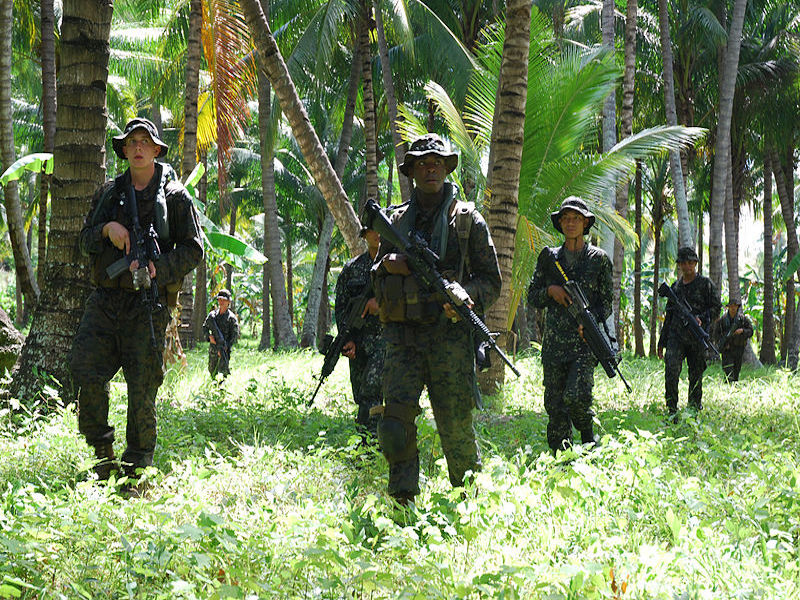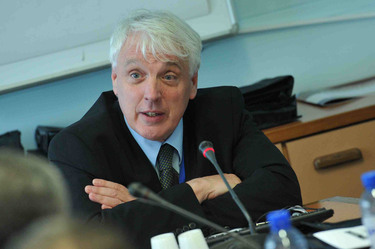Recent events in the Southern Philippines involving a firefight between Abu Sayyaf militants and the Philippine military resulting in the deaths of 18 soldiers and the murder of Canadian hostage, John Ridsdel, have put the spotlight on the country’s struggle to pacify Islamic separatist groups. In spite of receiving military support in the form of advisors, troops and funding from the US military for over a decade, the Philippine military’s successes in fighting threat groups have been limited to curbing their levels of activity.
Striving to establish a stronghold for Sharia law and an autonomous Islamic region, Abu Sayyaf has been operating on Mindanao Island and the Sulu Archipelago since the 1990s after its split from the Moro National Liberation Front (MNLF). Since 2002, the US has contributed around USD $ 50 million annually in the fight against transnational terrorist organizations and while the group’s manpower has dropped to below 500, the period since then has seen an increase of nearly 13 times in the number of militant attacks according to a study by the US think tank RAND Corp. Their primary vehicle for funding has been through the kidnapping of foreign nationals with at least 19 hostages taken since 2014 and it has become part of the underground economy of the region which has experienced widespread poverty.
Lack of economic opportunities in the region has allowed Abu Sayyaf to step in as an attractive alternative for locals to participate and cash in on the group’s kidnapping operations and expand its support network. Abu Sayyaf members have largely been supported through their ties to traditional clans and also family members and have built a local support network through the distribution of monetary gains from ransom payments to local communities. The group has gone further and integrated kidnapping funds into the local economy by sharing profits with local armed clans, corrupt politicians and the intermediaries who stand to benefit from helping the families of kidnap victims. The list of criminal activities in which Abu Sayyaf participates also include blackmail, extortion, smuggling and sales of illegal substances, putting the militant group in close touch with local criminal groups.
The Abu Sayyaf group’s association with other larger terrorist organizations and collaborators may have also helped supply the militants with arms and military equipment as well as training, advising, and financial funding. In its early days, the organization’s leader, Abdurajak Abubakar Janjalani, had connections with Osama Bin Laden and managed to secure a line of financial support from Al-Qaeda and also members of the Bin Laden family. There were also reports of questionable links between Abu Sayyaf and the Libyan government under Muammar el-Qaddafi and his family members who helped negotiate hostage releases and established charitable donations for regional development. With Qaddafi previously announcing support for the Moro Islamic separatist movement in the Southern Philippines, and little oversight over the distribution of donations that were supposed to go to Islamic schools and mosques, many millions are believed to have gone towards financing the militants.
With the declining influence of al-Qaeda and the rise of the Islamic State (IS), current Abu Sayyaf leader, Isnilon Hapilon, and senior members of Abu Sayyaf pledged their allegiance to IS in 2014, marking the end of their affiliation with al-Qaeda. The move was largely interpreted by officials as a self-serving one and an attempt by the terrorist group to develop closer relations with IS to receive funding and aid. The link between IS and Abu Sayyaf also gives the terrorist group better recognition internationally and could potentially increase its leverage in hostage negotiations, allowing it to increase ransom demands from western governments. Use of the IS flag and imagery have primarily featured in hostage videos involving Western hostages as a way of generating international publicity, whereas the IS flag has not yet featured in videos with Asian or Filipino victims.
In terms of transnational relations, Abu Sayyaf shares the closest ties with the Indonesian Islamic militant group, Jemaah Islamiyah, from whom it receives monetary support, training and logistical support. The two organizations collaborate closely, particularly in the Sulu Archipelago area, and have been known to trade military equipment, with weapons originating in the Southern Philippines being found in Indonesia following the 2002 Bali attacks. With both the Philippines and Indonesia having large numbers of workers in the Middle East, cooperation between the organizations has also helped secure extra streams of financing, exploiting weakness in financial regulations in the region through various means of money laundering and electronic money transfers.
Though ideologically, Abu Sayyaf has expressed itself as an Islamic separatist group aiming to establish a caliphate in the Philippines, its main activities have shifted from terrorist attacks and engagements with the Armed Forces of the Philippines to kidnapping and criminal activities. With Abu Sayyaf’s increasing the scope of its operations, performing kidnappings in nearby Malaysia, and developing closer ties with other international terrorist organizations as a means of funding, it remains a threat to regional stability.




